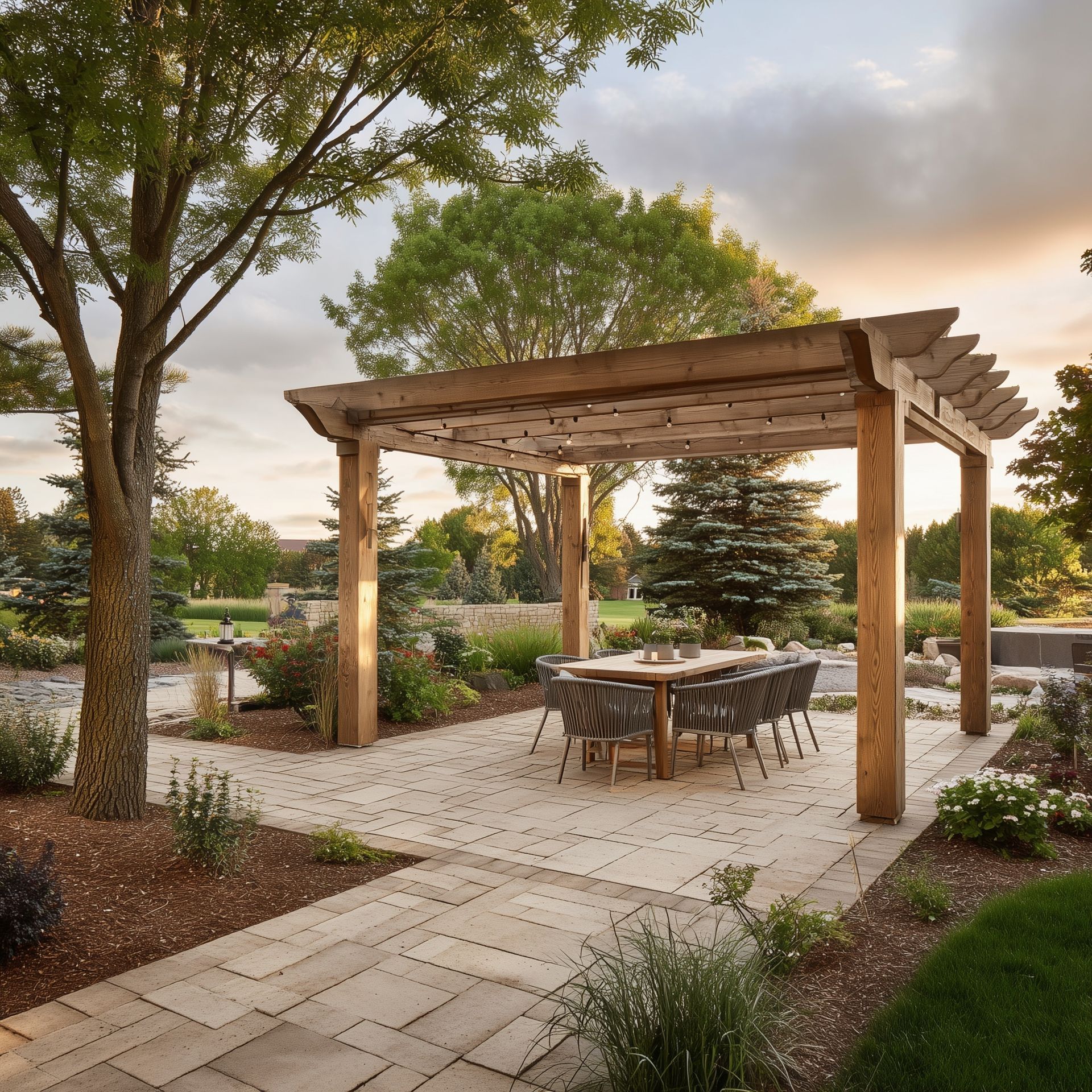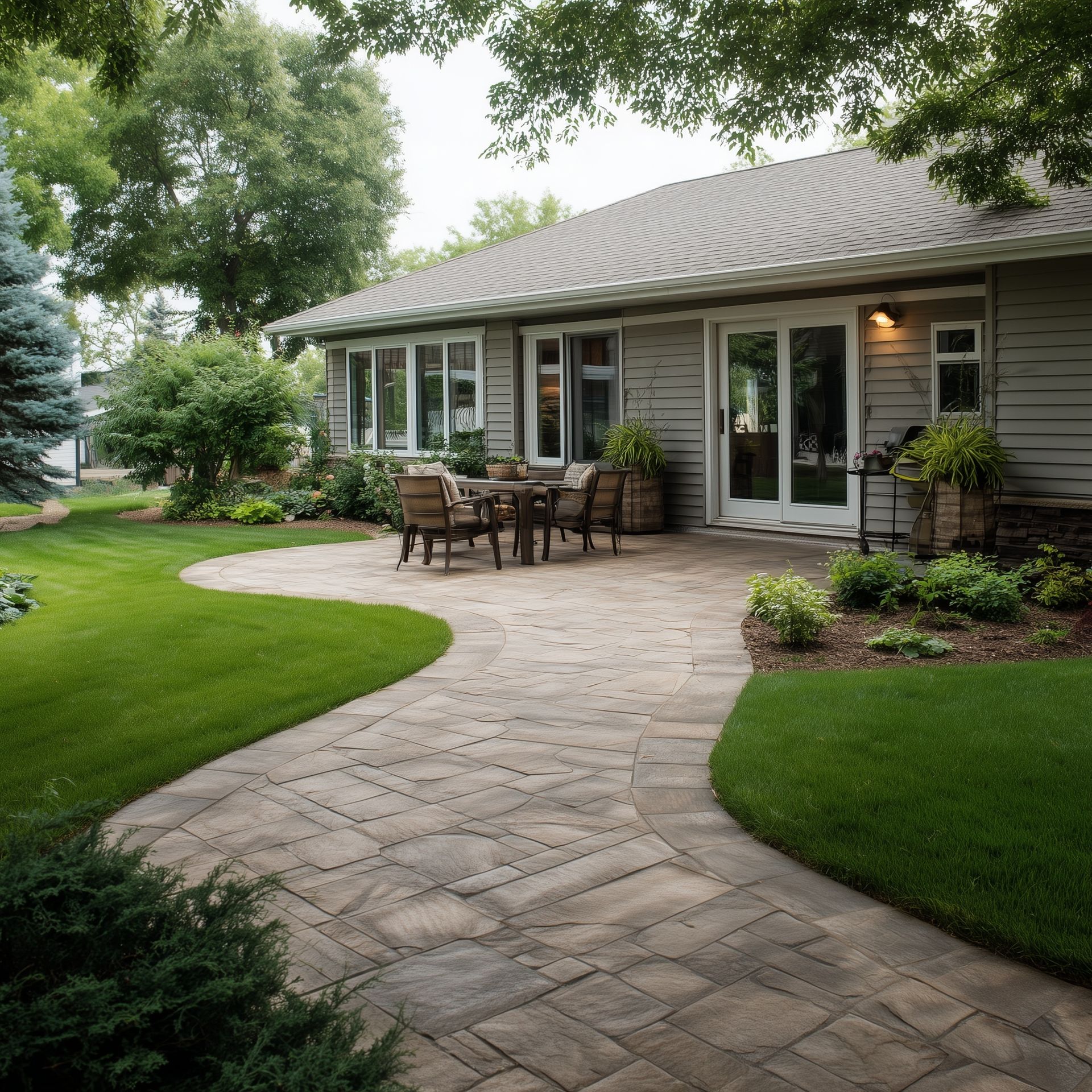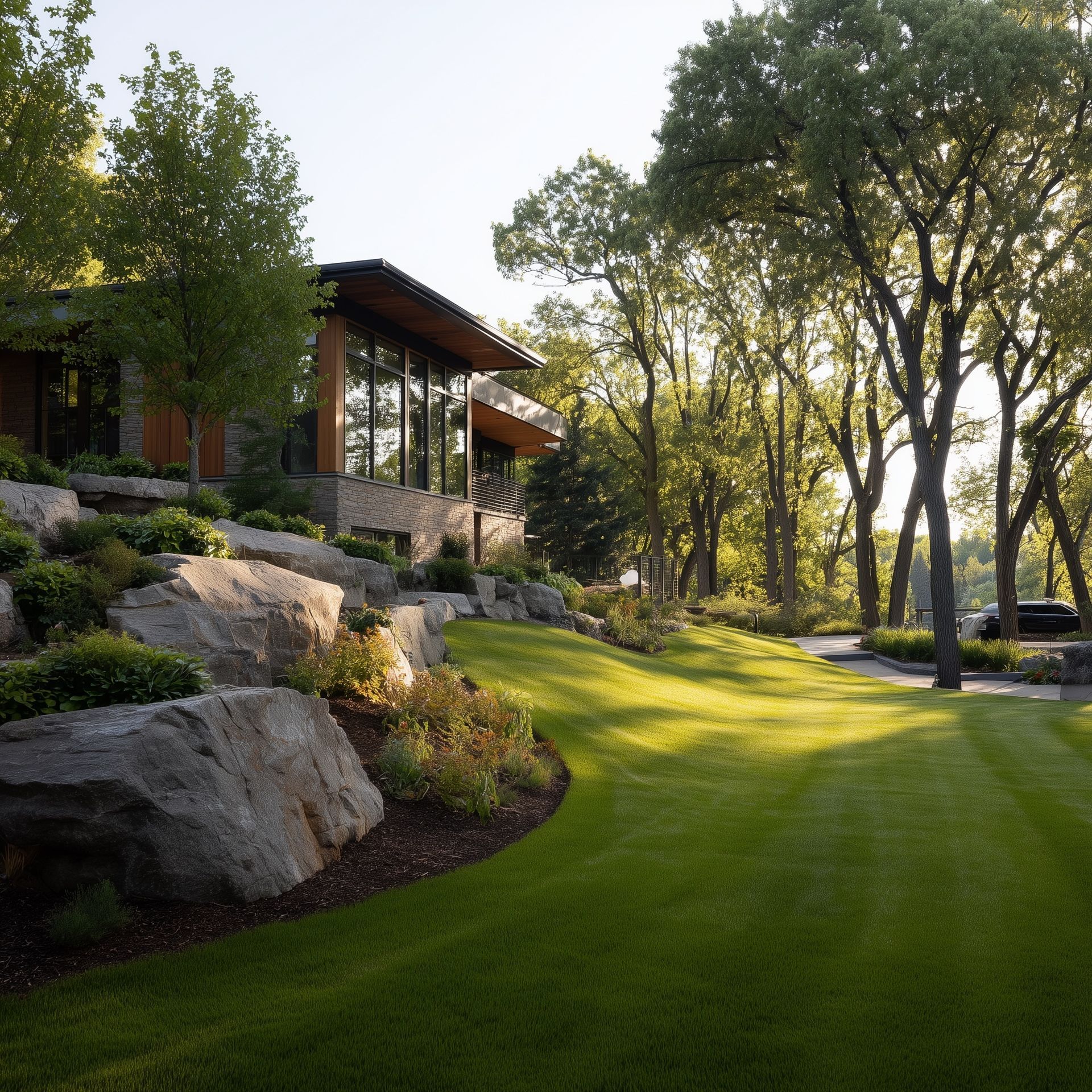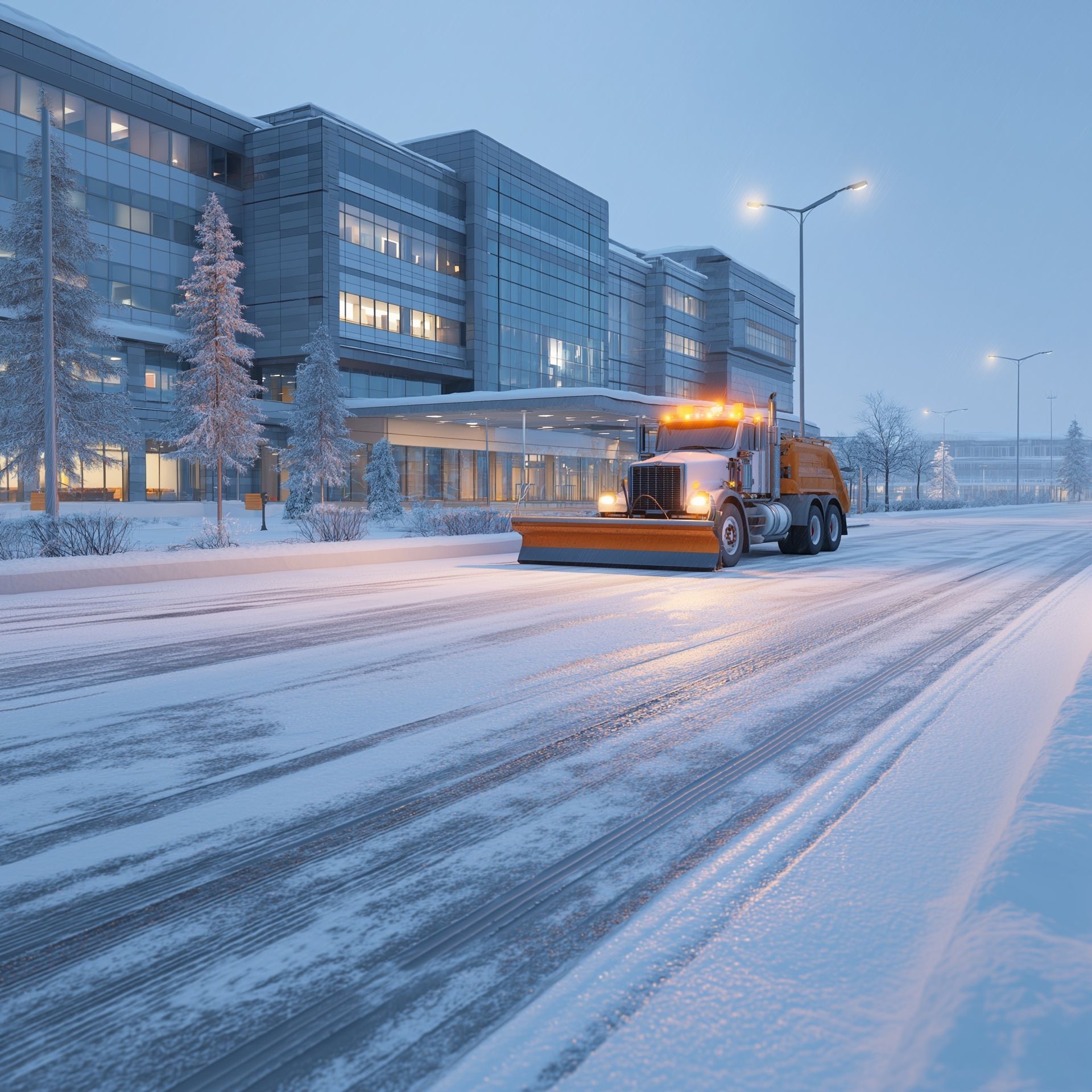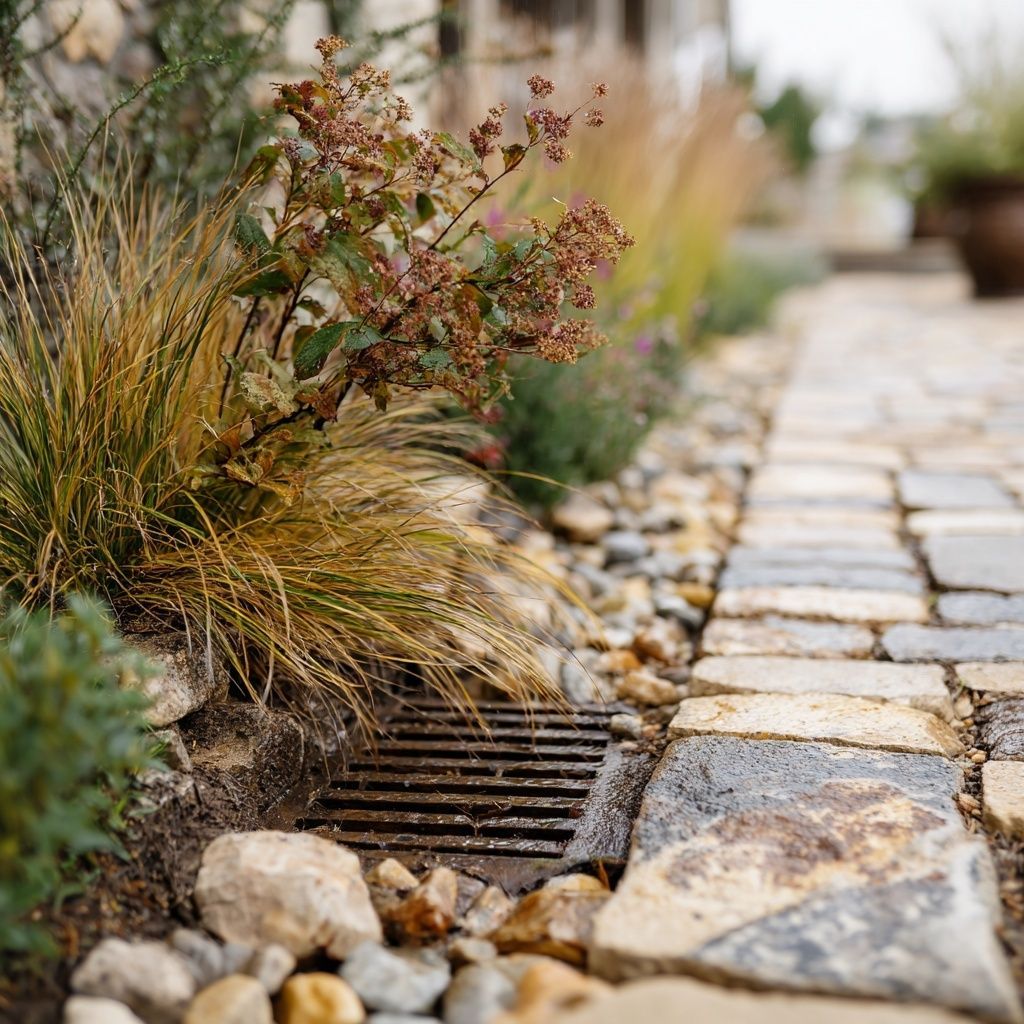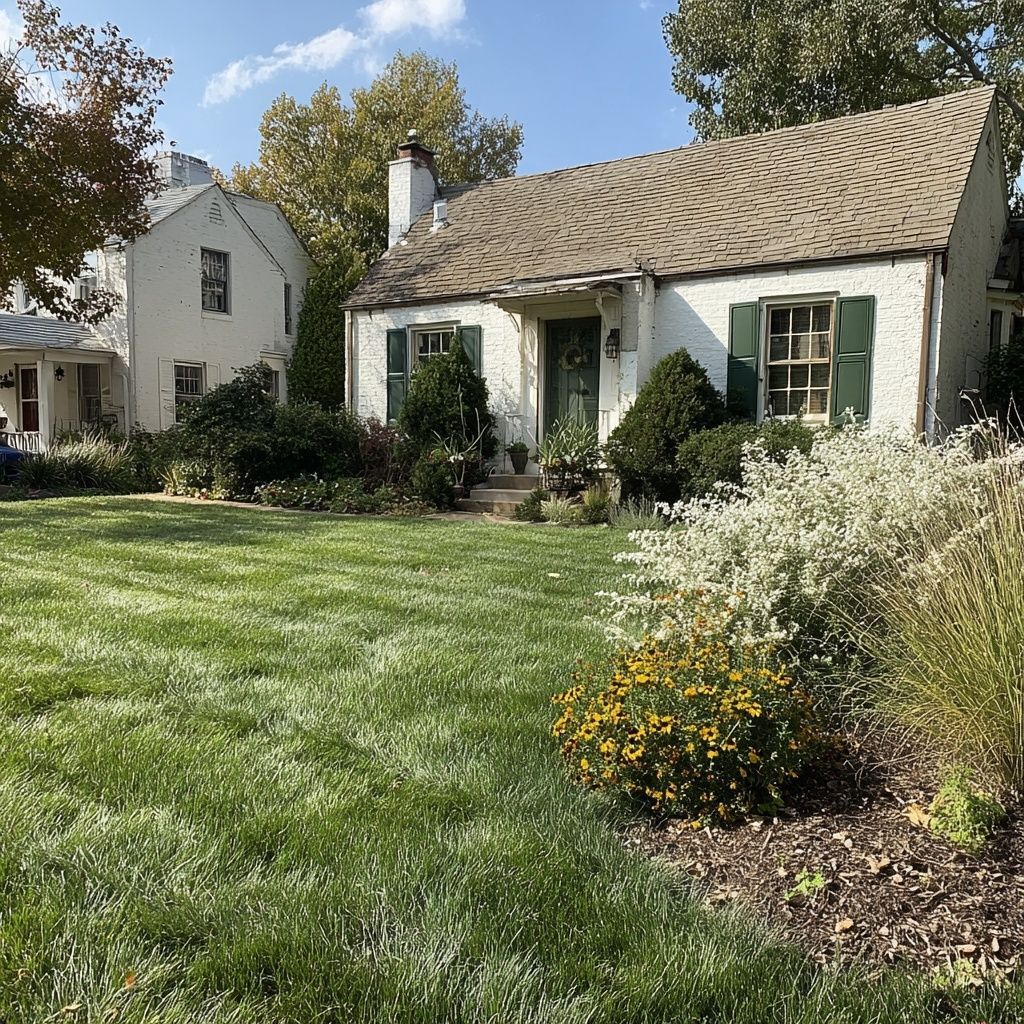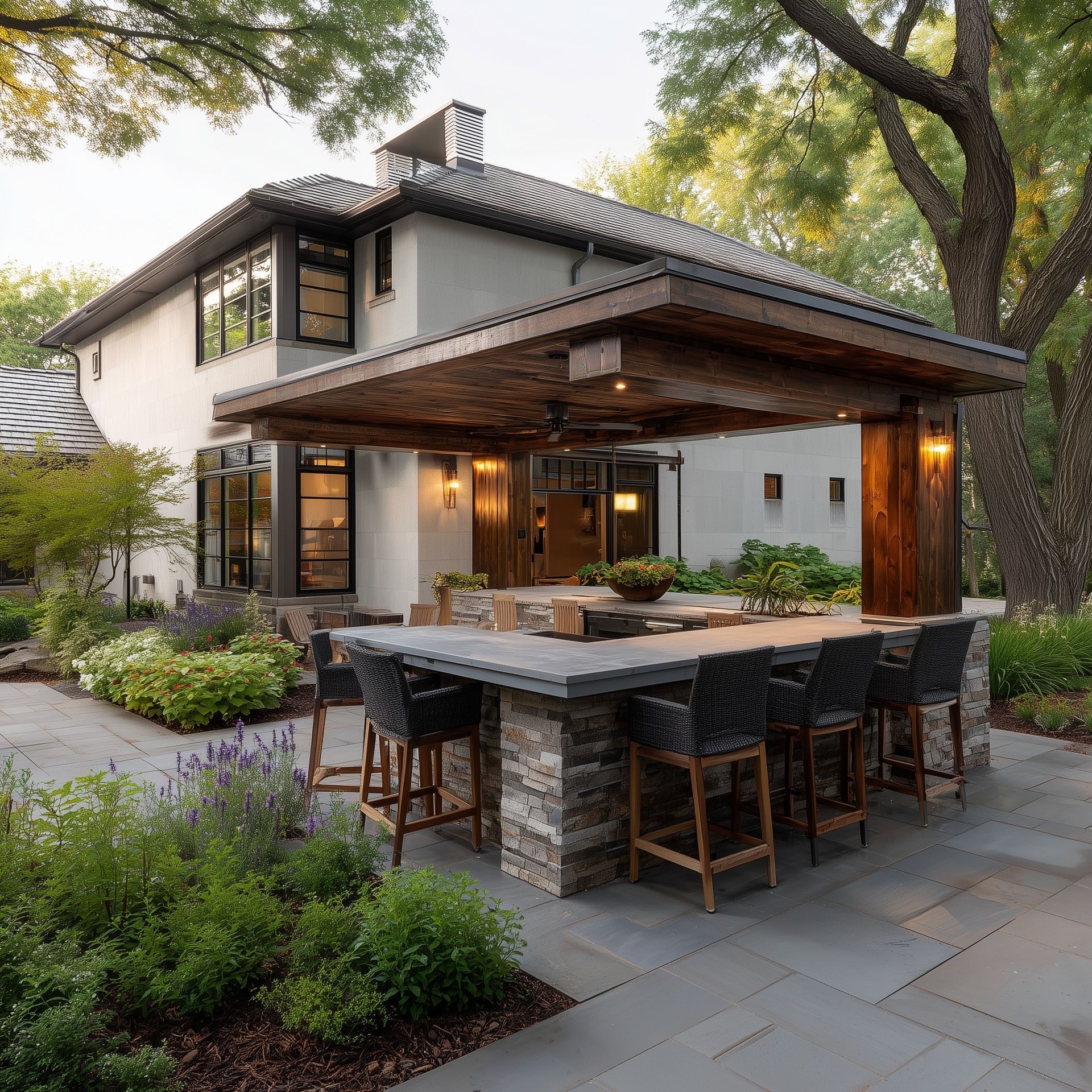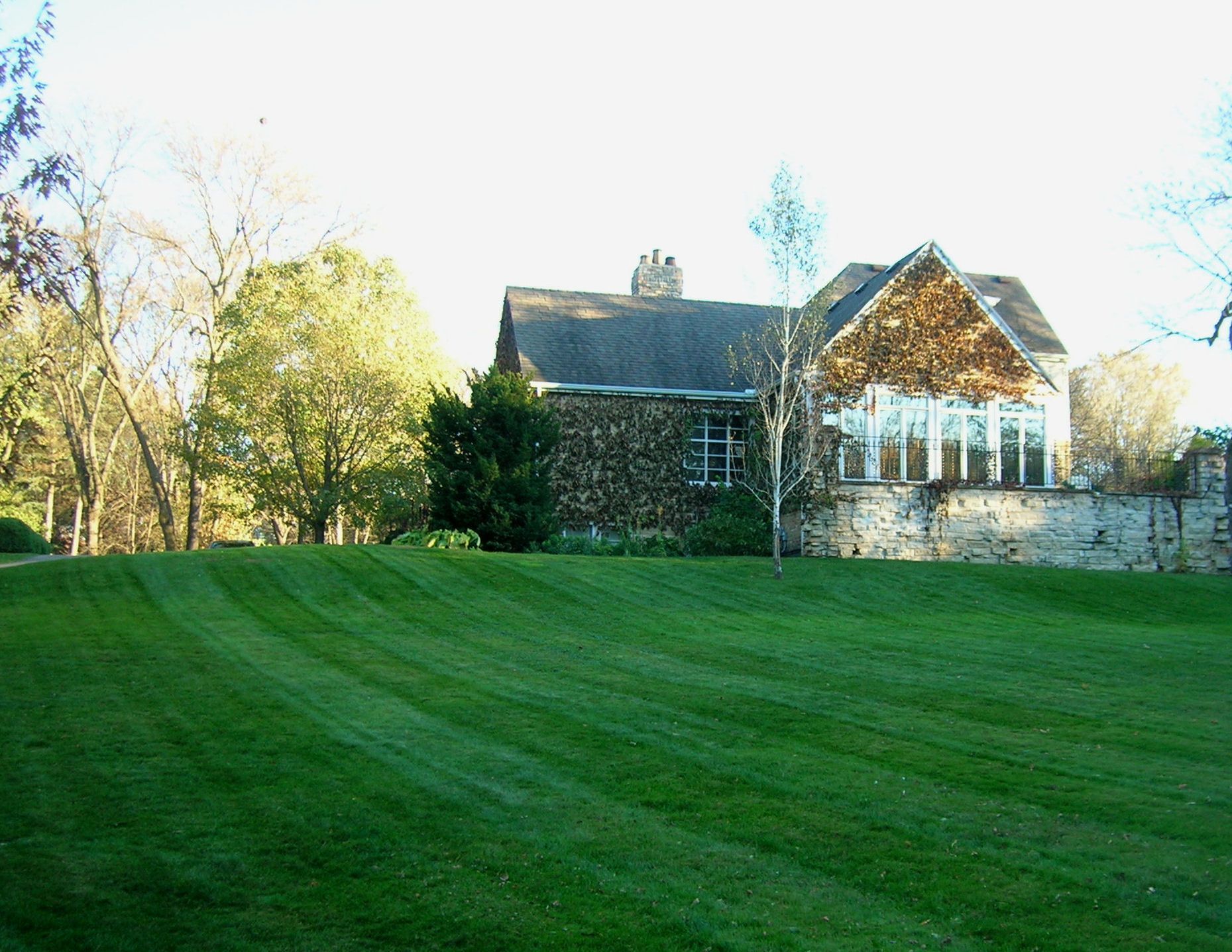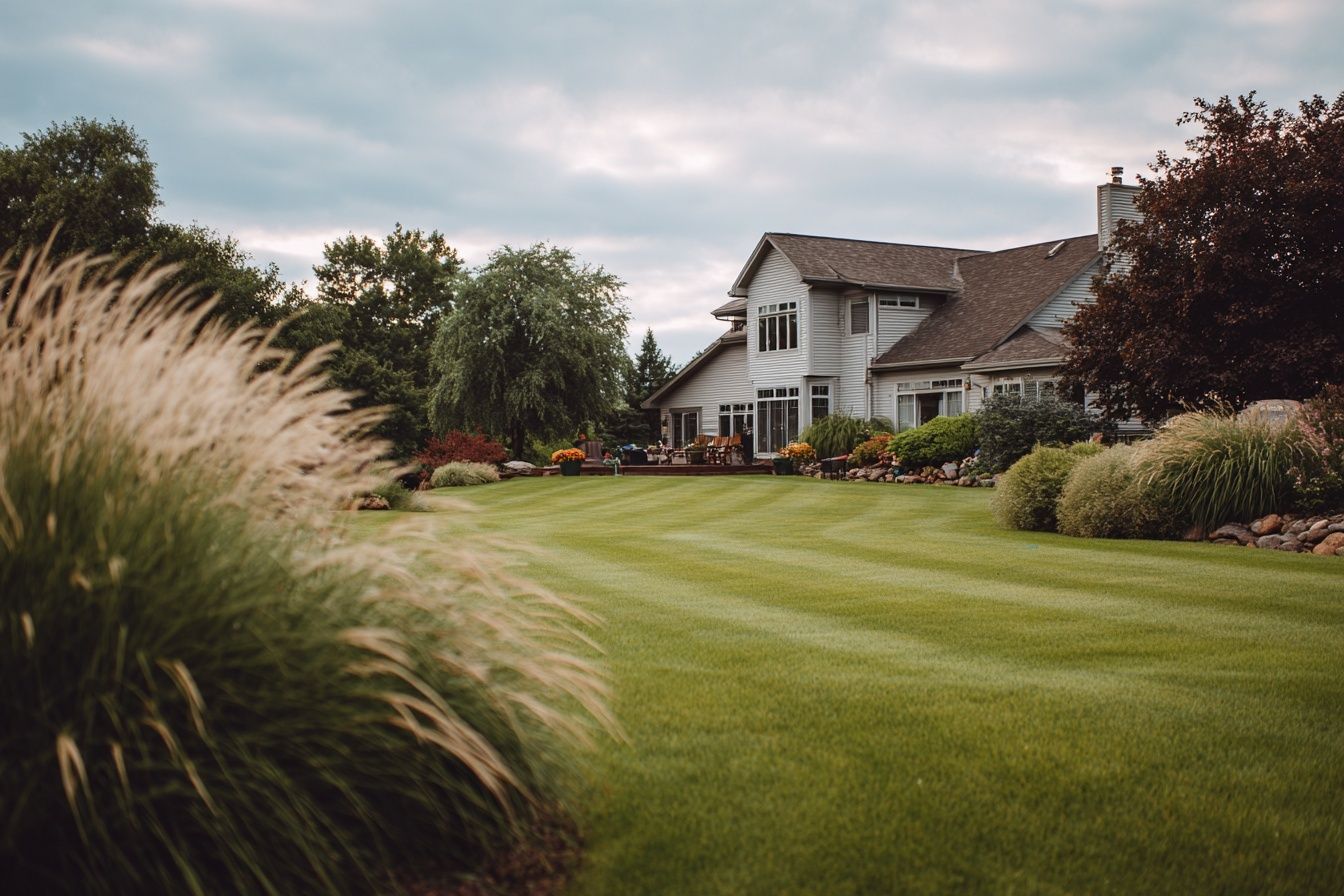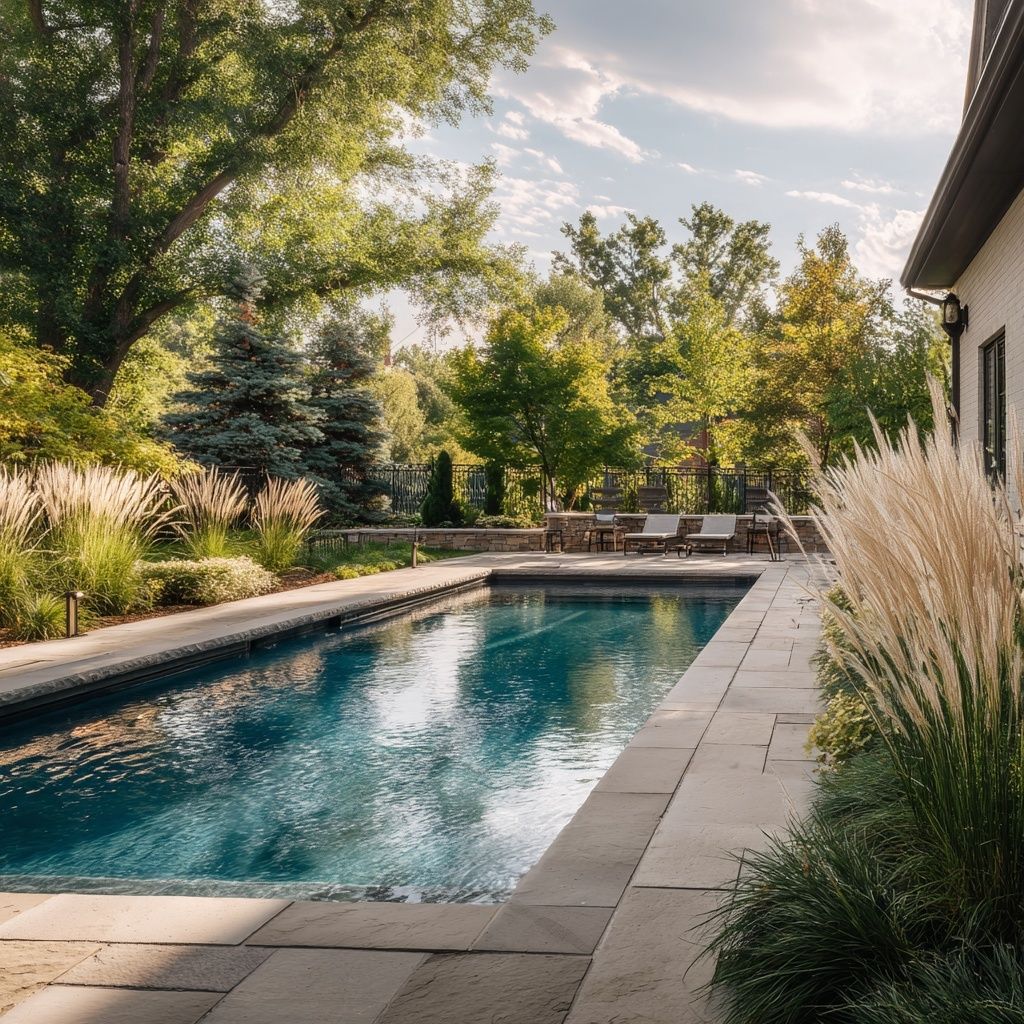Drainage Solutions for Sloped Properties in Minnetonka
Solutions for Properties in Minnetonka
You can always tell a Minnetonka yard that’s fighting its slope. Water doesn’t lie, it finds the weak spots every time. I’ve walked plenty of properties where a backyard starts beautiful in June, but by September, the patio is heaving, the grass near the pool looks like a marsh, and the homeowner is wondering how it got so bad so fast. The truth is, when you’re dealing with rolling terrain and heavy clay soils like we have around Minnetonka, you can’t just move dirt and hope gravity behaves. You need a plan that manages water from the surface all the way down through the subsoil.
This is what I’ll walk you through here. You’ll see what actually causes drainage issues on sloped properties, how poor planning leads to cracked patios and shifting pool decks, and the smart drainage systems that can stop those problems for good. Whether you live near Lake Minnetonka or up in the higher ridges closer to Deephaven or Woodland, understanding how your yard sheds water is the difference between a property that lasts and one that’s constantly under repair.
The Real Challenge of Sloped Minnetonka Yards
Minnetonka is known for its hills, lakefront properties, and mature trees, but all that beauty comes with a set of challenges below the surface. Most of the soil here is dense clay. It holds water like a sponge and drains slowly, which means after every heavy rain, that water looks for a way downhill. If it doesn’t have a proper outlet, it ends up collecting right where you don’t want it, like along your patio, at the base of a retaining wall, or near your pool deck.
I see this every season: homeowners trying to solve slope problems with a quick regrade, a layer of rock, or a simple surface drain. Those things might help for a while, but they don’t address what’s really happening underground. Clay soil doesn’t just get wet—it becomes saturated, expanding and contracting with every freeze-thaw cycle. When that happens under a patio or wall, it doesn’t matter how well-built the surface looks. The ground will move, and that movement cracks stone, shifts pavers, and slowly tears apart everything on top.
The other challenge with sloped lots is how water interacts with gravity. It accelerates downhill, gaining momentum as it goes. When it hits a flat area like a patio, the water loses speed but not volume, pooling instead of flowing. That’s why I tell clients that “flat spots” on a sloped property are both an opportunity and a responsibility. They’re the best spaces to create usable outdoor areas, but they have to be engineered to handle water movement.
I’ve worked on
plenty of Minnetonka yards where the backyard has a beautiful view but terrible grading. You can have a perfect slope on paper, but if it directs water toward your house or creates a bowl effect between structures, you’ll end up with soggy soil and standing puddles that never dry. The goal is to move water off and away while keeping the surface level enough for comfort and usability. It’s a fine balance, but when it’s done right, it completely transforms how a property functions.

How Poor Drainage Affects Patios, Pools, and Retaining Walls
A lot of homeowners first notice drainage problems when their hardscapes start showing signs of stress. Maybe the pavers near the pool deck start shifting, or they see gaps forming between the patio and the house. Sometimes, it’s a retaining wall that begins leaning or bulging because the soil behind it is constantly saturated. In every case, the issue comes back to one thing: water isn’t moving where it’s supposed to go.
The number one goal for drainage around patios and pools is to keep water from penetrating below the surface. When water seeps under a patio and saturates the soil beneath, that base material becomes unstable. Once the freeze-thaw cycle starts, that moisture expands, lifting and heaving the pavers until the entire surface starts to move. I’ve seen patios that looked perfect the day they were installed, only to buckle and shift after one harsh Minnesota winter.
Around pools, the problem can be even worse. Super-saturated soil near a pool can damage the liner or the pool structure itself. The pressure of expanding water in clay soil can cause cracks in the concrete or push pavers out of alignment. Over time, the water chemistry inside the pool can even be affected because rainwater is draining in instead of away. It’s not just a cosmetic issue—it’s a structural one.
That’s why I focus so much on pitch. Every patio or pool deck needs to be designed with the right slope, usually between one-eighth and one-quarter inch per foot. That gentle grade ensures water flows off the surface instead of collecting. If that slope isn’t there, you’re inviting long-term damage.
Retaining walls face their own version of this problem. When there’s no drainage behind them, the hydrostatic pressure builds up, forcing the wall outward. A properly designed wall should include drain tile or weep holes to relieve that pressure. Otherwise, it’s just a matter of time before you start seeing separation or cracks.
All of these issues are preventable with proper drainage planning. It’s not about adding one drain or patching one spot—it’s about creating a system that works with the slope and soil from the start.
Photo: Example of patio and pool deck transition with slot drain to capture runoff.

Smart Drainage Systems That Keep Sloped Properties Stable
When I talk about “smart” drainage, I don’t mean technology. I mean thoughtful design. The systems that actually work are the ones tailored to the property, not a one-size-fits-all fix. In Minnetonka, where the soil is dense and the slopes can be tricky, that usually means a combination of different drainage layers working together.
One of the most effective tools is a drain tile system. I use perforated four-inch pipe wrapped in a silt sock to prevent sediment from clogging the holes. This pipe gets buried underground and acts as a hidden channel for water that would otherwise sit trapped in the soil. When we’re working in heavy clay, I often take it a step further by replacing the clay backfill around the pipe with a 50/50 mix of sand and topsoil. That sandy backfill allows water to reach the pipe faster, instead of forcing it to fight through the dense clay first. It’s what I call “drain tile with a sandy backfill mix,” and it’s the perfect balance of cost and performance.
For smaller or more targeted areas, a French drain may make more sense. It’s a deeper trench filled with rock, designed to collect and redirect surface and subsurface water. French drains are great when you need to solve a specific problem spot—like where water collects at the bottom of a slope or where a patio meets the yard.
Then there are surface systems, like channel drains and slot drains. I use these around pools and patios where hard surfaces meet, especially between the house and pool deck. Those are natural low points where water from multiple slopes converges. A well-placed channel drain keeps that water from running into your foundation or pooling where it can cause damage.
The key is to design the entire drainage plan as one connected network. That means thinking about where the water starts, how it moves across your property, how it filters through the soil, and finally where it exits. In Minnetonka, that often means routing water to a natural outlet, a storm drain, or a dry well that’s placed far enough downhill to keep everything stable.
When we get it right, the difference is immediate. Lawns dry faster after rain, patios stay level, and you don’t have to worry about erosion washing away your landscape beds or mulch every spring.
Long-Term Stability and Maintenance for Sloped Yards
Good drainage isn’t just about what happens during construction. It’s about how the system holds up for the next 10 or 20 years. When I finish a project, I want homeowners to enjoy their yard without ever thinking about water again. That’s the goal—to make the solution invisible and effortless.
For sloped yards, that long-term stability starts with regular checks. Once or twice a year, it’s smart to make sure your drain outlets are clear, especially if they discharge into a wooded area or near lake vegetation. Sediment buildup, leaves, and debris can block the outlet and reduce efficiency. The same goes for surface drains around patios and pools. Keeping them free of debris ensures they keep doing their job.
You also want to keep an eye on your grading. Even small shifts in the soil can change how water moves. Over time, erosion, tree roots, or settling can create dips or low points. A quick regrade every few years can keep everything flowing in the right direction.
The benefits go beyond structure. A yard that drains properly is healthier overall. You’ll avoid the muddy, uneven patches where mosquitoes breed, and you’ll have firmer, more usable lawn space. Retaining walls stay upright, patios stay smooth, and you get to actually enjoy your property without worrying about the next storm.
In the end, drainage is one of those things you don’t notice when it’s done right—and that’s exactly the point. Once we install the right systems, the water quietly goes where it’s supposed to go, year after year.
Photo: Finished sloped Minnetonka backyard with multiple terraces, patio seating, and stable lawn areas.
FAQs
What’s the difference between French drains and drain tile for sloped yards?
A French drain is a rock-filled trench that handles both surface and subsurface water in smaller, problem-prone areas. It’s great when you have one specific low spot that collects water. Drain tile, on the other hand, is a perforated pipe system that works underground over longer distances. It’s ideal for heavy clay soil and large yards because it quietly collects water as it moves through the soil. In many Minnetonka yards, I combine both. The French drain solves immediate pooling problems, while the drain tile system handles the slow, deep saturation that comes from dense clay soils.
How much slope is too much for a usable backyard in Minnetonka?
A little slope is normal, but anything beyond a 10% grade starts to limit how you can use your space. That’s where regrading and retaining walls come into play. We can carve out flat terraces for patios, firepits, or play areas while still keeping the natural drainage pattern intact. The trick is balance—creating level spaces that are functional while maintaining just enough slope to keep water moving away from your house and structures.
Can slot drains work with natural stone or paver patios?
Absolutely. Slot drains can be integrated cleanly into both natural stone and paver designs. They’re especially useful in spaces between a pool and a patio, or between a house and a walkway, where water from multiple directions meets. The key is making sure the drain’s pitch matches the rest of the surface. When designed properly, the slot drain becomes almost invisible, blending into the design while quietly handling the runoff.
How long do drainage systems last before they need replacement?
If they’re installed right, they can last decades. A perforated drain tile system with proper backfill can easily perform for 25 years or more. The biggest factor in longevity is keeping debris out of the outlets and making sure the system remains unobstructed. I’ve gone back to properties we installed 15 years ago, and those systems are still working like day one because we used the right materials and made sure water had a clear path out.
